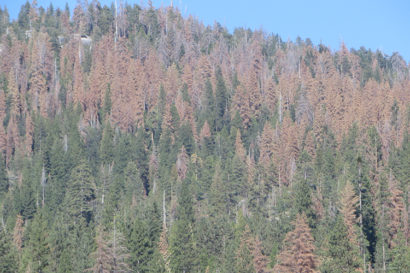The rate of drought-induced tree mortality has been observed to increase across the world, and is expected to continue to increase dramatically as temperatures (and evaporative demand) rise. Increased drought stress, however, will not lead to mortality everywhere, and in situ monitoring of this heterogeneous process is cumbersome and expensive. Predicting where droughts will lead to tree mortality is critical for forest management and forest risk, but plant physiological models differ widely in their mortality predictions. Alternatively, a number of simple climatic indices have been proposed as indicators of mortality risk. However, these do not take into account differences in biogeophysical factors (e.g. topography) and plant drought response strategies that also affect mortality risk. In this talk, I will use the case study of the 2012-2016 California drought to demonstrate that plant canopy water content measurements from microwave remote sensing provide a more informative estimator of mortality risk. Using a machine learning based-model of mortality that considers multiple climatic, topographic, and vegetation characteristics, I will show that vegetation water content adds more than twice as much information as any other factor. I will discuss the advantages and disadvantages of this prediction approach, including the characteristics and possibilities of the canopy water content datasets and the effects of reductions in water content on mortality at multiple lag times.
Remotely sensed canopy water content as a predictor for tree mortality


